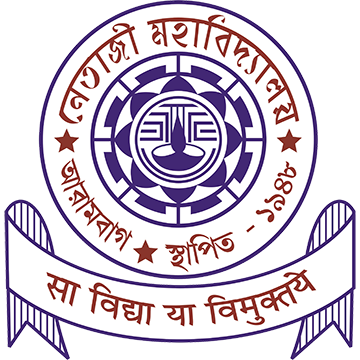FOCUS is a multidisciplinary bilingual (English/Bengali) refereed Journal published annually. It publishes Research articles, Reviews, Notes and News in all segments of Pure Sciences, Biological Sciences, Social Sciences, Literatures, Business and humanities.
Goals and Objectives: Inspiring and encouraging the researchers, scientists and academicians for free thinking, innovativeness and creating atmosphere for the development of scientific research as well as research in Social Science, Literatures, Business and humanities.
Instructions to Authors for
Preparation of Manuscript
Revised on 22.03.2018
Author(s) are requested to prepare their manuscript following instructions stated below.
Manuscript preparation: Manuscript must be type written in double-space, font size 12, font style Times New Roman with wide margins (2.5 cm) on all sides of a white A4 paper. To expedite publication, the Editorial Board prefers to communicate with authors by E-mail. The Editors reserve the right to adjust style and language to certain standards of uniformity. The manuscript should be presented in the following order.
- Title of paper
- Name(s) of author(s)
- Affiliation of author(s)
- Abstract
- Key words
- Introduction
- Materials and Methods
- Results and Discussion
- Conclusion
- Acknowledgement
- References
All the section headings (4-11) must be written in bold letters with font size 12.
Title: Title should be concise and informative. It should be written in bold letters using sentence-case with font size 14 and font style Times New Roman.
Author name(s) and affiliation(s): Name of all the author(s) must be written first followed by their respective affiliation(s) in sentence-case.
Corresponding author: Clearly indicate the corresponding author by putting an asterisk (*) over the name of the author, who will handle correspondence at all stages of refereeing, publication, and post-publication. E-mail address of the corresponding author is mandatory.
Abstract: A concise and factual abstract (within 250 words) is required. The abstract should state briefly the purpose of the research, the principal results and major conclusions.
Key words: Immediately after the abstract, provide a maximum of 6 key words.
References: In citing references the following system should be followed.References to literature, numbered consecutively, must be placed at the end of the paper in the Reference section. In the text theseshould be indicated by numbers placed as superscript before the punctuation mark. For example -The ionic liquids are highly polar solvents1,2 and a large number of studies are reported3-5.
- Journal papers: Names and initials of all authors, year, title of paper, journal name (given in full or abbreviated using the International List of Periodical Title Word Abbreviations), Volume number (issue number): first and last page number of the paper. Journal name and volume number to be written in italic.
- Singh AB and Kumar P (2004). Aerial pollen diversity in India and their clinical significance in allergic diseases. Ind. J ClinBiochem. 19:190-201.
- Chakraborty P, Ghosh D, Chowdhury I, Chatterjee S, Chanda S and Gupta-Bhattacharya S (2005). Aerobiological and immunological studies on Carica papaya L. pollen: An aeroallergen from India. Allergy 60: 920-926.
- Books: Names and initials of all authors, year. Title of book. Name of publisher, location of publisher, ISBN, page numbers.
- Editorial volume papers: Names and initials of all authors, year. Title of paper, Names and initials of the volume editors, title of the edited volume. Publisher, location of publisher, first and last page number of the papers.
- Conference proceedings papers: Names and initials of all authors, year. Title of paper. Name of the conference. Publisher, location of publisher, first and last page number of the paper.
- Unpublished theses, reports etc.: Names and initials of all authors, year. Title of item. All other relevant information needed to identify the item (e.g. technical report, Ph.D. thesis, institute, etc.).
Example:
Example:
Bhattacharya K, Majumdar MR and Gupta-Bhattacharya S (2011). A text book of Palynology. New Central Book Agency (P) Ltd., Calcutta, ISBN 81-7381-500-3, pp. 182-184.
Example:
Thomas E (1992). Middle Eocene-late Oligocene bathyal benthic foraminifera (Weddell Sea): faunal changes and implications for ocean circulation. In: Prothero DR and Berggren WA (Eds.), Eocene-Oligocene Climatic and Biotic Evolution. Princeton University Press. Princeton, NJ, pp. 245-271.
Example:
Smith MW (1988). The significance of climatic change for the permafrost environment. Final Proc. Int. Conf. Permafrost. Tapir, Trondheim, Norway, pp. 18-23.
Example:
Moustakas N (1990). Relationships of morphological and physicochemical properties of Vertisols under Greek climate conditions, Ph.D. Thesis, Agricultural University. Athens, Greece.
Submission of paper:
An electronic version of the manuscript completed in all respects as per the instructions must be sent to the E-mail id: focus.nmarambagh@gmail.com. Manuscript will be considered for publication through proper review of the quality of the article, on the following conditions that (1) the work has not been published previously (except in the form of an abstract or as a part of an academic thesis) (2) it is approved by all authors and all authors are aware of the data/ information provided.
Copyright: Netaji Mahavidyalaya reserves the copy right of all the articles and information published in the journal.
Dear Researchers/ Academicians,
Multidisciplinary, refereed journal FOCUS ISSN 2278-1501 is inviting you to submit research papers for its publication very soon.



 Editorial Board
Editorial Board